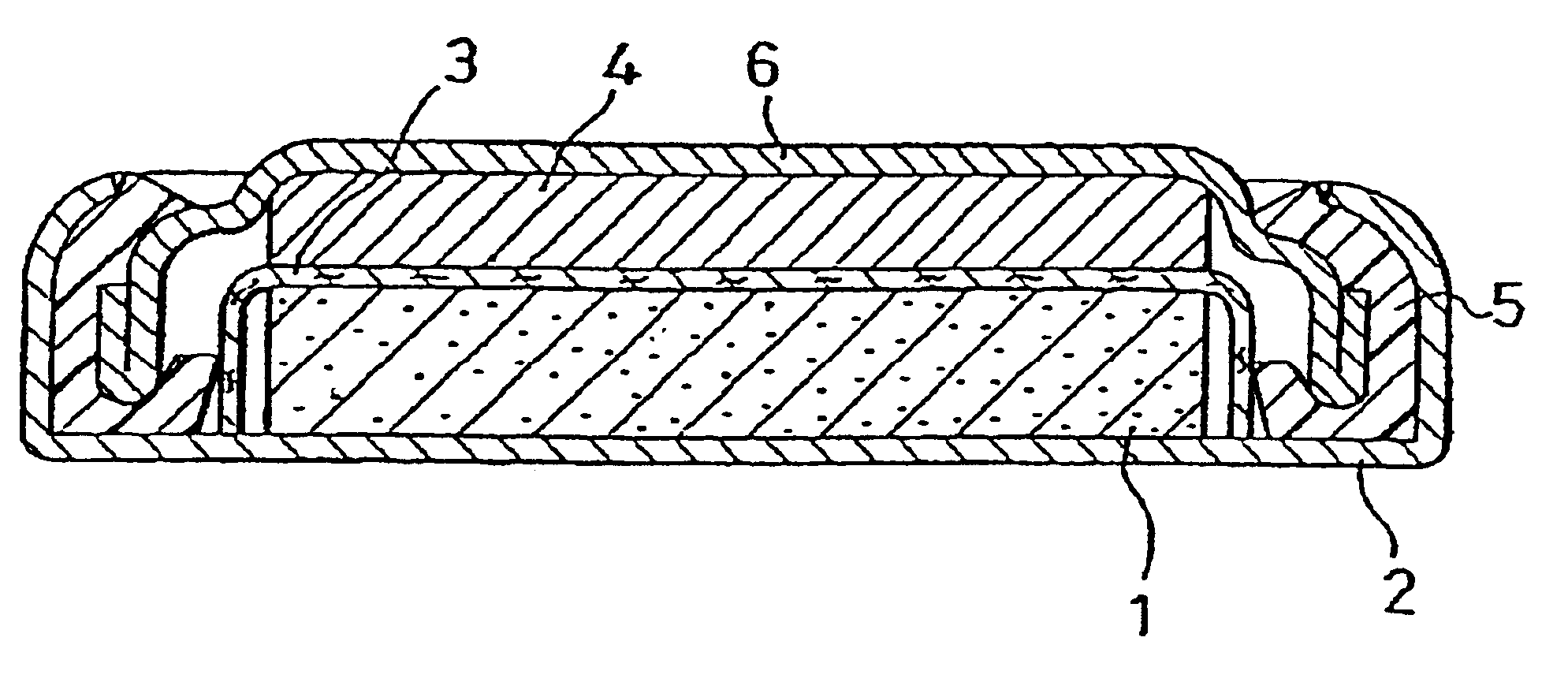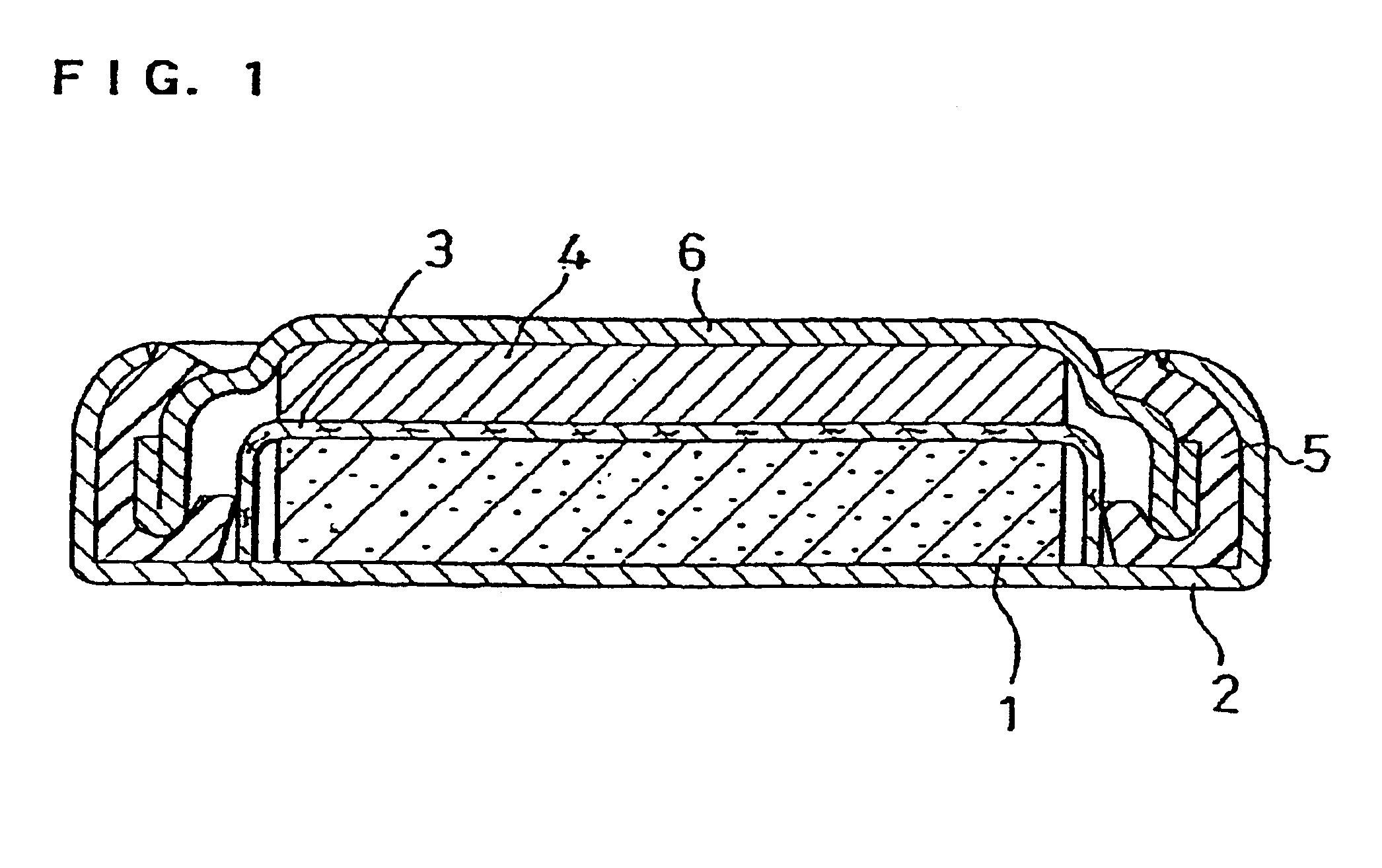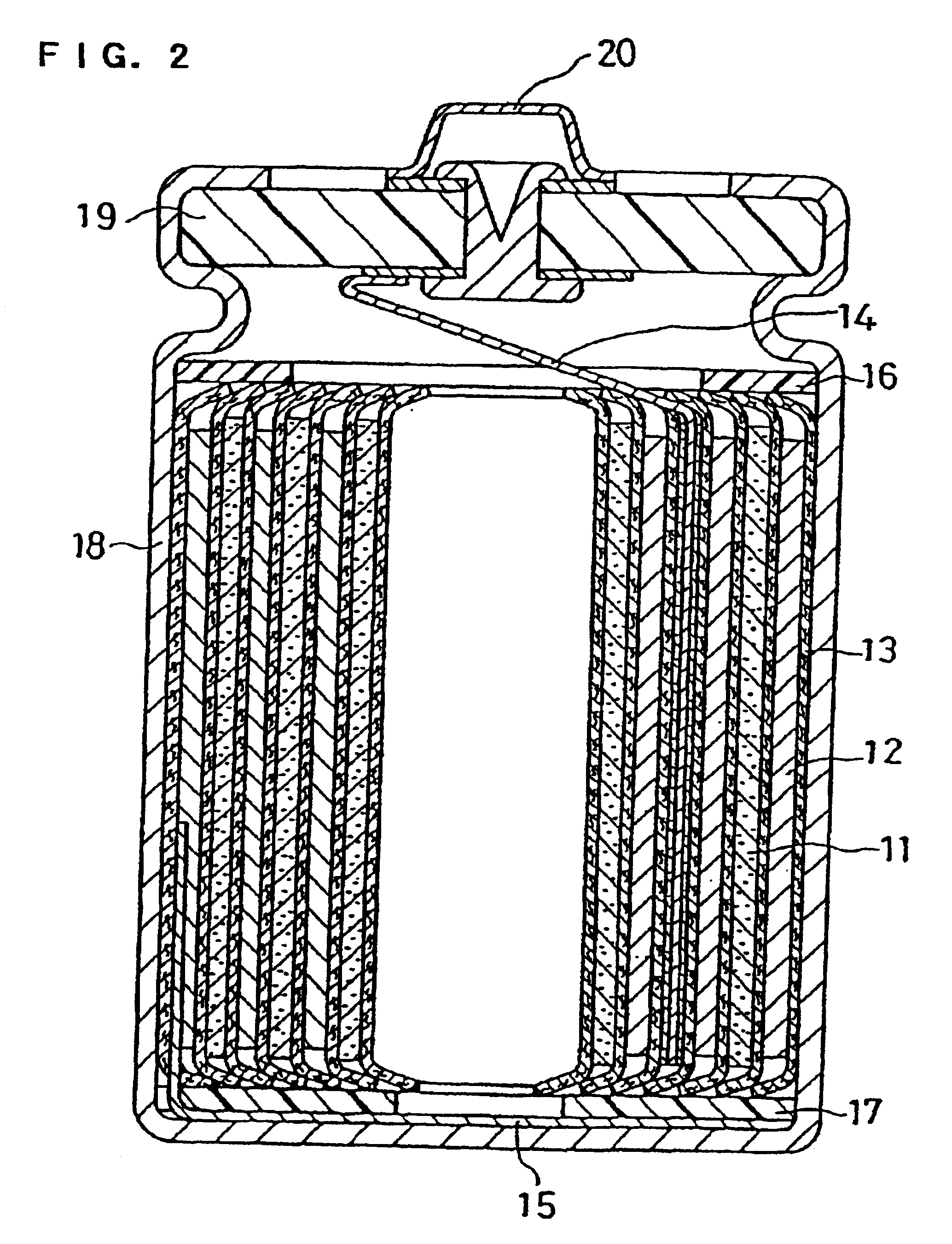Non-aqueous electrolyte secondary battery
a secondary battery, non-aqueous electrolyte technology, applied in the direction of cell components, electrochemical generators, transportation and packaging, etc., can solve the problems of reducing the conductivity of the negative electrode, reducing the charge and discharge efficiency, and the capacity of the carbon material is as small, etc., to achieve excellent high-rate discharge characteristics, high capacity, and long cycle life
- Summary
- Abstract
- Description
- Claims
- Application Information
AI Technical Summary
Benefits of technology
Problems solved by technology
Method used
Image
Examples
examples 1 to 6
Alloy particles were synthesized in the following manner.
Bulky simple substance materials were mixed at a predetermined ratio according to the material composition (Ti.sub.2 Sn) shown in Table 1. The mixture thus obtained was cast with an arc melting furnace.
Subsequently, spherical alloy particles were yielded from the obtained cast alloy by using a gas atomization process.
In the gas atomization process, the diameter of the jet nozzle was 1 mm .phi. and the gas jet pressure was 100 kgf / cm.sup.2.
As the jet gas, an argon gas containing 1% oxygen (Example 1), an argon gas containing 3% oxygen (Example 2), an argon gas containing 5% oxygen (Example 3), a nitrogen gas containing 1% oxygen (Example 4), a nitrogen gas containing 3% oxygen (Example 5) or a nitrogen gas containing 5% oxygen (Example 6) was used.
The alloy particles obtained by the gas atomization process were sifted through a 45 micron mesh sieve to give powders having a mean particle size of 28 .mu.m.
X-ray diffraction analys...
examples 7 to 12
Granular simple substance materials were mixed at a predetermined ratio according to the material composition shown in Table 3: CuZrSi.sub.2. The mixture thus obtained was cast with an arc melting furnace. Spherical alloy particles were yielded from the obtained cast alloy by using a gas atomization process under the same conditions as in Examples 1 to 6.
The obtained alloy particles were analyzed in the same manner as in Examples 1 to 6. The results are shown in Table 3. Also, the test cells and cylindrical batteries fabricated using the alloy particles were evaluated in the same manner as in Examples 1 to 6. The results are shown in Table 4.
TABLE 4
In each case of the alloy particles of Examples 7 to 12, the oxygen content Wo and nitrogen content Wn contained in the entire alloy particles satisfied 0<Wo<10 wt %, 0<Wn<10 wt % and 0.5 wt %.ltoreq.Wo+Wn.ltoreq.10 wt %. Also, the batteries of Examples 7 to 12 each had a high capacity, excellent high-rate discharge characteristics and lo...
examples 13 to 14
Granular simple substance materials were mixed at a predetermined ratio according to the material compositions shown in Table 3: NiLaGa or NiCeIn.sub.2. The mixture thus obtained was cast with an arc melting furnace. Alloy particles were yielded from the obtained cast alloy by using water atomization process. The water atomization was performed under a nitrogen atmosphere. The oxygen and nitrogen incorporated into the alloy in the water atomization process were supplied from the oxygen and nitrogen dissolved in water and also from the oxygen generated by the oxidation of water at the time of the collision of water and a molten metal.
In the water atomization process, water with a jet pressure of 800 kgf / cm.sup.2 was collided with the molten metal of the alloy to rapidly cool and pulverize the alloy. The alloy particles thus obtained were sifted through a 45 micron mesh sieve to give powders having a mean particle size of 20 .mu.m.
The obtained alloy particles were analyzed in the same...
PUM
| Property | Measurement | Unit |
|---|---|---|
| density | aaaaa | aaaaa |
| diameter | aaaaa | aaaaa |
| voltage | aaaaa | aaaaa |
Abstract
Description
Claims
Application Information
 Login to View More
Login to View More - R&D
- Intellectual Property
- Life Sciences
- Materials
- Tech Scout
- Unparalleled Data Quality
- Higher Quality Content
- 60% Fewer Hallucinations
Browse by: Latest US Patents, China's latest patents, Technical Efficacy Thesaurus, Application Domain, Technology Topic, Popular Technical Reports.
© 2025 PatSnap. All rights reserved.Legal|Privacy policy|Modern Slavery Act Transparency Statement|Sitemap|About US| Contact US: help@patsnap.com



